by Dawn Rainbolt & Chris Doyle
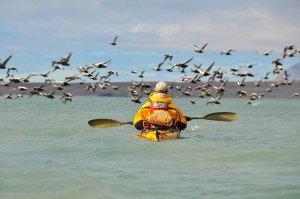
The true Arctic encompasses the northern regions of Alaska, Russia, Canada and Greenland, the archipelago of Svalbard, plus the top half of Norway, Sweden and Finland. Just beneath is the “subarctic.” These two regions are intertwined in their ecosystems, environment, and weather, and they often face the same challenges. These regions are often the first affected by climate change though they do little to instigate the problem.
American Pulitzer-Prize winning journalist Haynes Johnson once noted “the continuing, and essential, tension” in the balance of powers between the three branches of the United States government. Tourism in and around the Arctic is seeing a spike in visitation and the phrase “continuing and essential tension” seems relevant.
There is an inherent tension between tourism and conservation. An increase in visitors can mean an increased threat to the environment and to traditional cultures. But, responsible and purposeful tourism also can lead to net positive effects, as in increased cultural awareness and understanding between travelers and local peoples. Travelers can learn first-hand about the negative impacts of climate change then become champions of conservation after having transformative, personal experiences such as witnessing calving glaciers or a starved polar bear on a small floating ice island.
The ATTA is well aware of the tension in the region and our engagement throughout the region is on the rise. In April we’ll be in Åre, Sweden for an AdventureConnect Nordic Gathering. We wanted to take some time ahead of that meeting to secure some firsthand perspectives from some Arctic region experts who are deeply mired in tough discussions about the type and volume of travelers they wish to receive and how to deliver low-impact experiences. Differing perspectives -- and some very similar -- from Norway, Svalbard, Iceland and Greenland are offered to provide insights to help better inform the global community.
NORWAY
Petter Thorsen, Wild Norway
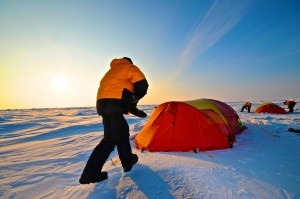
As part of continental Europe and therefore “easier’ to visit, Norway gets a fair amount of traffic. Petter Thorsen from adventure supplier cluster, Wild Norway, has noted both an increased interest in Arctic tourism, but also in climate change. “I’ve seen evidence of the ice melting,” he says, "When I started tourism in the 80s, the average thickness of the polar drift ice was about three meters. Now it’s only one meter. So if you are skiing to the North Pole nowadays you literally are on ‘thin ice’.”
Thorsen sees rapid rises in Arctic tourism as a threat both for the environment and the local way of life: “Of course, this increase in the number of tourists can be a threat for the environment. ….We need to be more selective about the right audience to come to the Arctic region. In general, long-term tourists are far more valuable to local economy and ultimately bring in more money.”
Thorsen vies for both more collaboration between all players in the Arctic, as well as more selectiveness on what kinds of tourists come to the region, saying, “It's very important that entrepreneurs and destinations work together, to build more quality guided tours, to make sure the people that go are really motivated and actually want to spend time there instead of ticking the box. It comes down to: what kind of tourism do you really want?”
SVALBARD
Ronny Brunvoll, Visit Svalbard
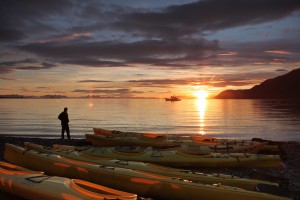
Due to its remote location, Svalbard is less affected by mass tourism than mainland Norway. It has three distinct seasons — Midnight Sun (summer), Light Winter (mid-February to mid-May) and Northern Lights (end of October to mid-February) — each offering diverse and intriguing attractions.
Interest in the archipelago has been increasing according to Ronny Brunvoll, the Manager of Tourism from Visit Svalbard. In 2015, overnight stays increased 11 - 12% for a total of 58,000 tourists. Brunvoll has noticed an increase in boat traffic, saying that more boats are coming to Svalbard, as it is more accessible.
Despite a steady improvement in infrastructure, mass tourism is not the goal of Svalbard. “We want to develop and increase tourism, but we want to do it right,” says Brunvoll. In fact, at any given time, there are never more than 650 overnight tourists in hotels and guesthouses (where the limitation is the number of beds) on the whole of Spitsbergen.
Unlike Greenland, there are no indigenous populations in Svalbard. Most citizens were born elsewhere and chose to live in Svalbard—so in some ways, they are tourists themselves, meaning they are more accepting of others who want to explore their adopted island.
Education is one way to preserve the Arctic’s tourism values. Brunvoll says “Training is heavily regulated, and we are focused on educating guides, managing tourism in a sustainable way, and do things locally.” He’s pleased with the progress so far: “We are very optimistic on the future of tourism here. People are thrilled by their experiences and tend to come back in different seasons.”
ICELAND
Ólöf Ýrr Atladóttir, Icelandic Tourist Board
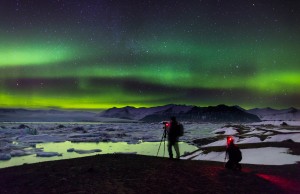
Iceland has been a hotspot for adventure tourism in recent years, and Ólöf Ýrr Atladóttir, the
Director General of the Icelandic Tourist Board, says there has been a large growth in both the numbers of visitors and the number of tourism operators, making tourism one of the country’s most important industries. She’s also seen an increase in cruise ship travel to the island. She’s worried about the numbers and reserved about jumping onto the ‘mass tourism’ bandwagon. Calling for destinations to address what is the best long-term strategy for their region, she says, “I do believe it’s important for Nordic countries to have an objective vision for the future development of the industry, and to have a clear strategic planning framework as a basis for that vision.”
Like Thorsen, she is interested in defining the main types of visitors that Iceland can attract in the future—for example, those adventurers who come to immerse themselves in local culture, heritage, landscapes, cuisine and way of life. The possible degradation of both the environment and local culture are two concerns: “The Arctic and Subarctic are flagship areas for global warming,” Atladóttir says. “We have to nurture tourism industries that are environmentally responsible—and this will not be done if we don't have environmental awareness programs as well as guidelines or accreditation systems to provide quality control.”
Iceland’s goal is for Iceland to be “an enjoyable and memorable adventure for all our visitors,” according to Atladóttir. “We might not try to cater for all types of travellers; however, all are welcome. Therefore, we must plan carefully and take into account the needs of different modes of travel, so that for example visitors on cruise ships receive their authentic taste of Iceland without diminishing the current and future experience of visitors with different lifestyles and needs.”
GREENLAND
Lykke Yakaboylu, Visit Greenland
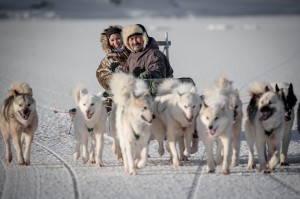
Like Svalbard, Greenland is relatively remote and therefore disinclined towards mass tourism. However, climate change is something that affects the landmass. Lykke Yakaboylu, Senior Consultant and Relationship Management from Visit Greenland, says the island has seen an increase in tourism. “The fact that the ice is melting is something that has given Greenland a lot of potential,” she says. However, adaptation is something Greenland does well.
Greenland has a long heritage as well as a rugged landscape—the two main things that draw visitors in. They come to Greenland to find this last frontier of pure wilderness. “It’s a recent change,” Yakaboylu says, “but tourists are more and more adventurous.” As a reaction, Greenland has had to reposition itself. “We changed the whole image of Greenland from the ‘classic’ image with the royal family dog sledding and hunters in fur clothing,” she says. “That’s not what you get today—now it's a very modern country.”
Challenges for Greenland exist not so much in the form of mass tourism, but in infrastructure. Transportation is difficult in Greenland, and often a plane is the only way to travel between regions. And tourists tend to come in significantly larger numbers in the summer. “The challenge is get people to come in other times,” admits Yakaboylu. “For tourism to be an important industry, we need to expand—we can’t live off three months of tourism.” New airports, hotels and roads are all in the works, but such growth takes time.
The main cruises that stop in Greenland are smaller boats that provide revenue benefiting locals. In general, she is content with the numbers of tourist arrivals. “I think we can manage the numbers for many years to come—it’s about 67,000 per year now, which is still an increase of 52% from 2014 to 2015.”
Responding to today’s desire for authentic experiences, Visit Greenland has been working more with locals to combine interaction with locals during a kayaking or hiking or climbing trip. “We discovered that clients were interested in what locals are doing, so we try to put locals and clients together,” Yakaboylu says.
